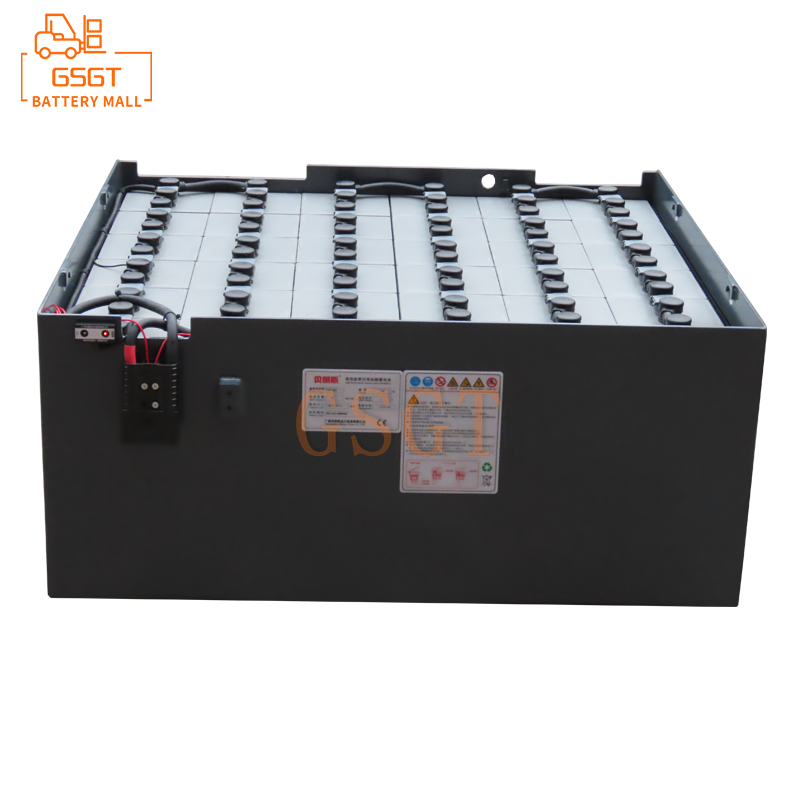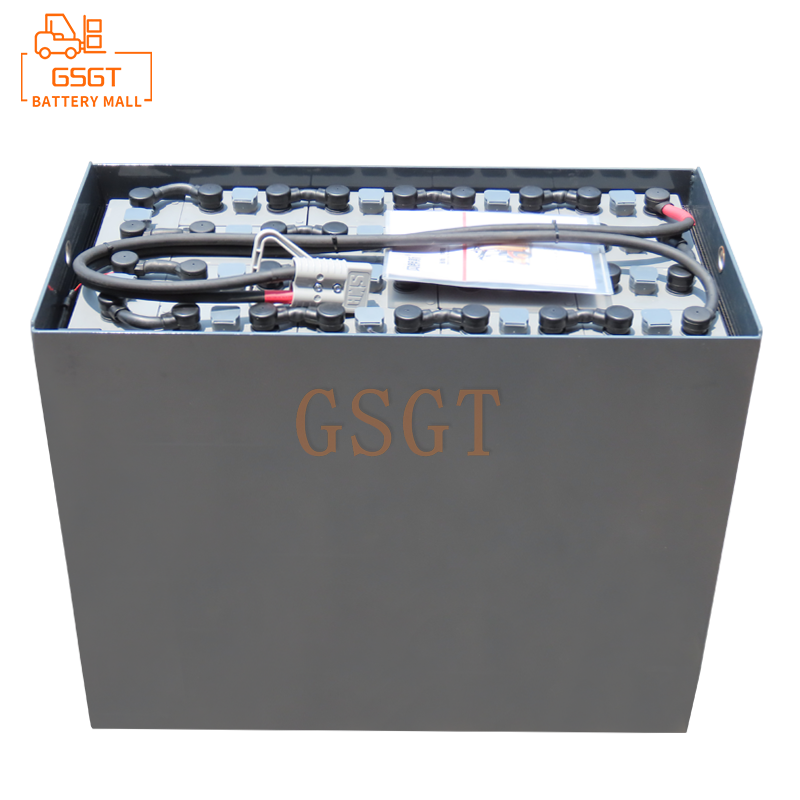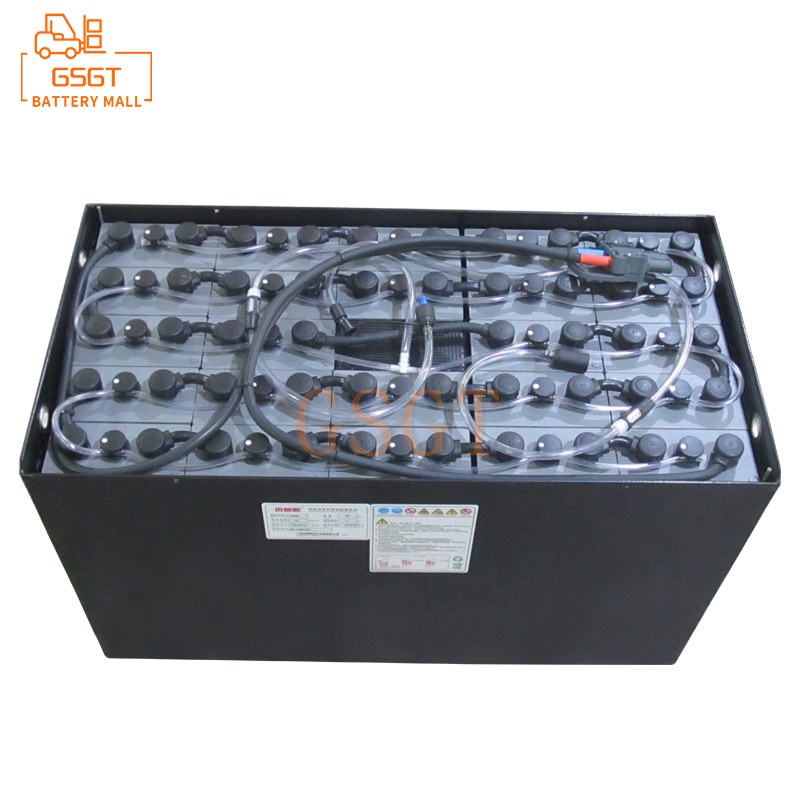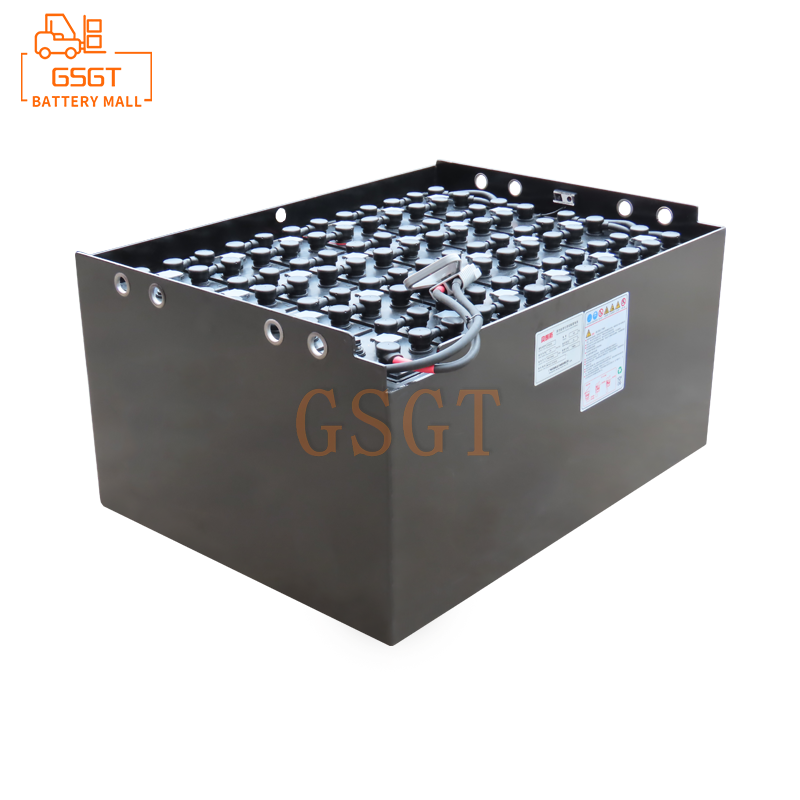Time:2025-06-06 10:34:44
Browse:607
In the modern logistics, warehousing and industrial production fields, forklifts, as important handling equipment, the safe use of their power source - batteries - is of vital importance. However, during the frequent use of forklift batteries, electrolyte leakage problems occur from time to time. The electrolyte is highly corrosive. Once it leaks, it will not only cause damage to the equipment but also pose a threat to personnel safety and even lead to environmental pollution. Therefore, mastering the knowledge of emergency handling of electrolyte leakage is a key link for the safe use of forklift batteries.
1. Characteristics and Hazards of Electrolyte
The electrolyte used in forklift batteries is mainly composed of sulfuric acid and water mixed in a certain proportion. Sulfuric acid is highly corrosive and can rapidly corrode various materials such as metals, rubber and plastics. When the electrolyte leaks and comes into contact with the metal parts of the forklift, such as the frame and fork arm, it will cause electrochemical corrosion, resulting in rust and holes on the metal surface, reducing the strength of the components and shortening the service life of the forklift.
For personnel, contact of the electrolyte with the skin can cause chemical burns. Mild cases may present with redness, swelling and pain, while severe cases may lead to necrosis of the skin tissue. If it accidentally splashes into the eyes, it can seriously damage the eyeball tissues and even lead to blindness. In addition, if the electrolyte leaks to the ground and is not dealt with promptly, it will seep into the soil or flow into the sewer, polluting the soil and water bodies and damaging the ecological environment.
2. Common Causes of Electrolyte Leakage
(1) External force damage
During the operation of forklifts, they often need to travel and move goods in narrow Spaces, and collisions and jolts are inevitable. When the battery is subjected to severe impact or compression, the casing may develop cracks or damage, which can lead to electrolyte leakage. For example, when a forklift is transporting goods, the goods accidentally fall and hit the battery. Or when the forklift collides with the shelves or walls, it may cause damage to the battery casing.
(2) Aging and Malfunction
As the usage time increases, the battery case and plates will gradually age. The plastic material of the shell will become brittle and the sealing performance will decline. The plates may also deform and break due to long-term charging and discharging. In addition, faults such as loose connection components inside the battery and ineffective sealant can also lead to electrolyte leakage. For instance, the separator between the battery plates ages and breaks, causing the positive and negative electrodes to come into direct contact, generating a large amount of heat, which in turn leads to the expansion and cracking of the casing.
(3) Improper use
Overcharging and overdischarging are common improper usage behaviors that lead to electrolyte leakage. Overcharging will cause a large amount of gas to be generated inside the battery, increasing the pressure. If the safety valve cannot open in time to release the pressure, it will lead to bulging or even rupture of the casing. Excessive discharge will cause sulfation of the plates, reducing the performance of the battery. At the same time, it may also cause changes in the density of the electrolyte, which has adverse effects on the battery casing. In addition, if the charging operation is not carried out in accordance with the prescribed current and voltage, or if the forklift is used continuously for a long time without replenishing distilled water in time, the risk of electrolyte leakage will also increase.
3. Emergency Response Procedures for Electrolyte Leakage
(1) Immediately stop the operation to ensure the safety of personnel
Once electrolyte leakage is detected, the forklift operator should immediately stop the operation, quickly evacuate the site, and set up a cordon area to prevent unauthorized personnel from approaching. At the same time, operators should wear protective equipment properly, such as acid and alkali resistant gloves, goggles, protective suits, etc., to avoid direct contact with the electrolyte. If any person accidentally comes into contact with the electrolyte, the contact area should be immediately rinsed with plenty of clean water for no less than 15 minutes. In case of eye contact with electrolyte, keep the eyes open, rinse continuously, and go to the hospital as soon as possible for professional treatment.
(2) Prevent the spread of leakage
After ensuring the safety of personnel, timely measures should be taken to prevent the leakage and spread of the electrolyte. Adsorption materials such as activated carbon, vermiculite, and special adsorption cotton can be used to adsorb the leaked electrolyte. Evenly sprinkle the adsorption material in the leakage area to cover the electrolyte and allow it to be fully absorbed. Meanwhile, use acid and alkali resistant containers to collect the materials that have adsorbed the electrolyte to prevent secondary leakage. If the leakage volume is large, a cofferdam can also be set up around the leakage area to prevent the electrolyte from further spreading.
(3) Clean up the leakage site
After the electrolyte has been fully adsorbed, use tools to clean the adsorption material and the remaining electrolyte thoroughly. During the cleaning process, it is necessary to avoid splashing the electrolyte to prevent secondary pollution. For the ground contaminated by the electrolyte, neutralizing agents can be used for treatment. Common neutralizing agents include sodium bicarbonate (baking soda) solution. Dissolve an appropriate amount of sodium bicarbonate in water to prepare a solution of a certain concentration. Then, use a mop or cloth to dip into the solution and wipe the contaminated floor to neutralize the remaining acidic electrolyte. Finally, rinse the ground clean with clear water and make sure it is dry.
(4) Check the battery
After cleaning up the leakage site, a comprehensive inspection of the battery should be carried out. Check whether there are obvious damages or cracks in the battery casing, inspect whether the plates are deformed or damaged, and test whether the density and liquid level of the electrolyte are normal. If the battery is found to be severely damaged and cannot be repaired, a new battery should be replaced in time. If it is only a minor damage, it can be repaired according to the actual situation. However, the repaired battery must undergo strict inspection and trial operation to ensure safety and reliability before it can be used again.
(5) Properly handle waste
The adsorption materials generated during the cleaning process, the neutralized wastewater and the damaged batteries and other wastes are all classified as hazardous wastes and must be properly disposed of in accordance with relevant regulations. These wastes should be sorted and collected, and handed over to hazardous waste treatment units with the corresponding qualifications for disposal. It is strictly prohibited to discard or discharge them at will to prevent environmental pollution.
4. Preventive Measures for Electrolyte Leakage
(1) Strengthen daily inspection and maintenance
Regular inspection and maintenance of forklift batteries is an important measure to prevent electrolyte leakage. Check whether the battery casing is intact and whether there are any cracks, bulges or other phenomena. Check whether the connecting parts are loose and whether the sealant has aged and failed. Measure the liquid level and density of the electrolyte to ensure they are within the normal range. Generally speaking, the electrolyte level should be maintained 10 to 15 millimeters above the plates, and the density of the electrolyte should be adjusted according to different seasons and usage environments. In addition, it is necessary to regularly clean the dust and dirt on the surface of the battery to prevent dust from entering the battery and affecting its performance.
(2) Standardize the operation procedures
Operators must strictly follow the user manual of the forklift and the battery to operate and avoid overcharging and overdischarging. When charging, use the matching charger and charge according to the specified current, voltage and time. During use, pay attention to observing the battery's power indicator. When the power is lower than the specified value, it should be charged in time. At the same time, during the operation of the forklift and the handling of goods, sudden braking, sharp turns and violent collisions should be avoided to prevent the battery from being damaged by external forces.
(3) Select high-quality products
When purchasing forklift batteries, it is necessary to choose brand products with reliable quality and good reputation. High-quality storage batteries offer better guarantees in terms of casing materials, plate quality, and sealing performance, effectively reducing the risk of electrolyte leakage. In addition, it is necessary to pay attention to checking information such as the production date, shelf life and after-sales service of the product to ensure that you purchase a product that meets the standards.
(4) Employee Training and Education
Regular training should be provided to forklift operators and related maintenance personnel to enhance their awareness of the hazards of electrolyte leakage and their emergency response capabilities. The training content should cover knowledge such as the characteristics of the electrolyte, causes of leakage, emergency handling procedures, and preventive measures. Through training, employees can operate and maintain the battery correctly. When encountering electrolyte leakage, they can carry out emergency response promptly and effectively to ensure personnel safety and the normal operation of the equipment.
5. Conclusion
Electrolyte leakage is a safety hazard that cannot be ignored during the use of forklift batteries. Mastering the emergency treatment knowledge and preventive measures for electrolyte leakage is of great significance for ensuring the safe operation of forklifts, the life and health of personnel, and the safety of the environment. Through measures such as strengthening daily inspection and maintenance, standardizing operation procedures, selecting high-quality products and providing staff training, the occurrence of electrolyte leakage can be effectively prevented. When a leakage occurs, operating in accordance with the correct emergency response procedures can minimize the damage. In practical work, enterprises and relevant personnel should attach great importance to the safe use of forklift batteries, constantly enhance safety awareness and emergency response capabilities, and ensure the smooth progress of logistics warehousing and industrial production.

$4045

$2140

$3130

$5710

MESSAGE
Professional And Efficient
Security
Affordable Price
Professional Services